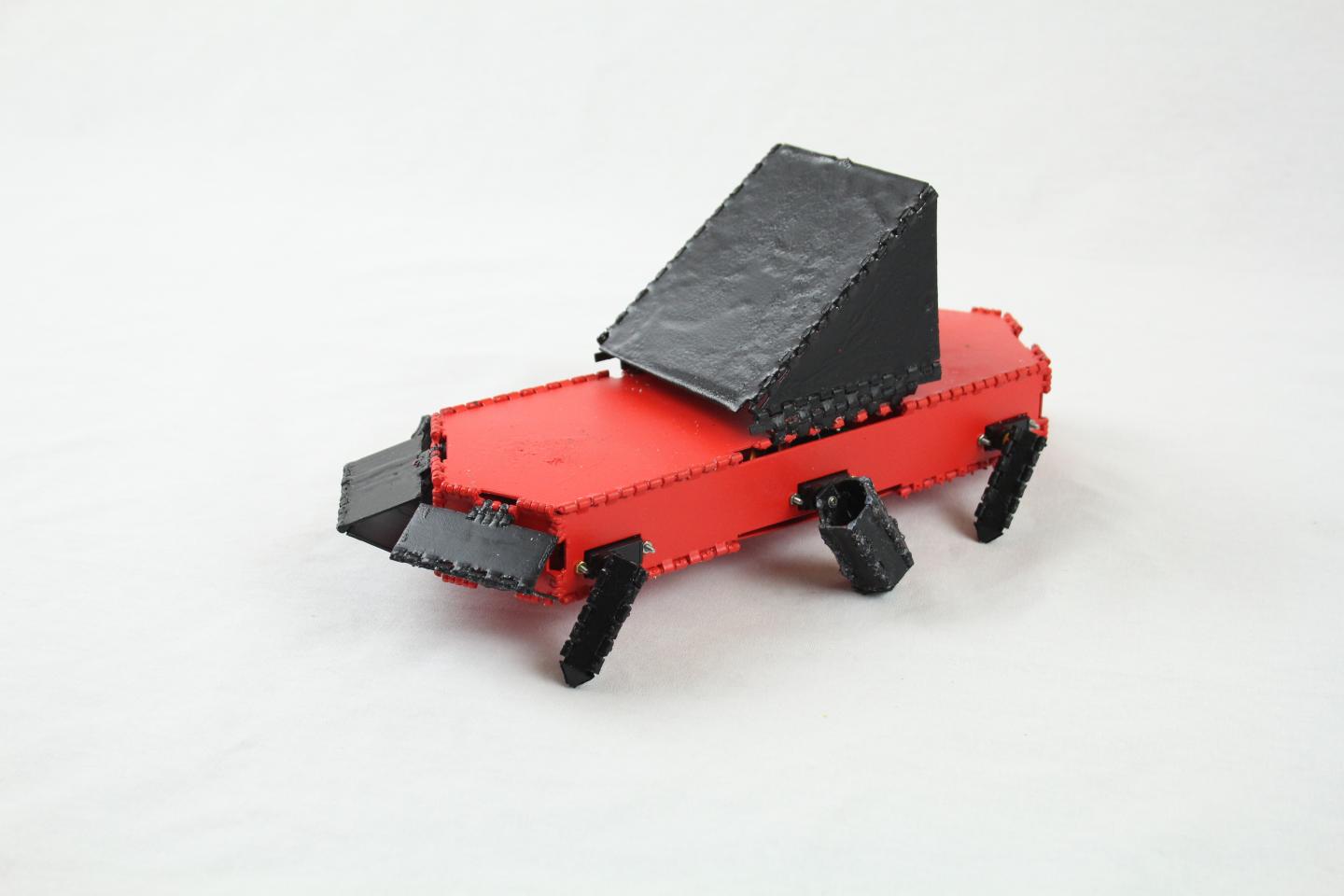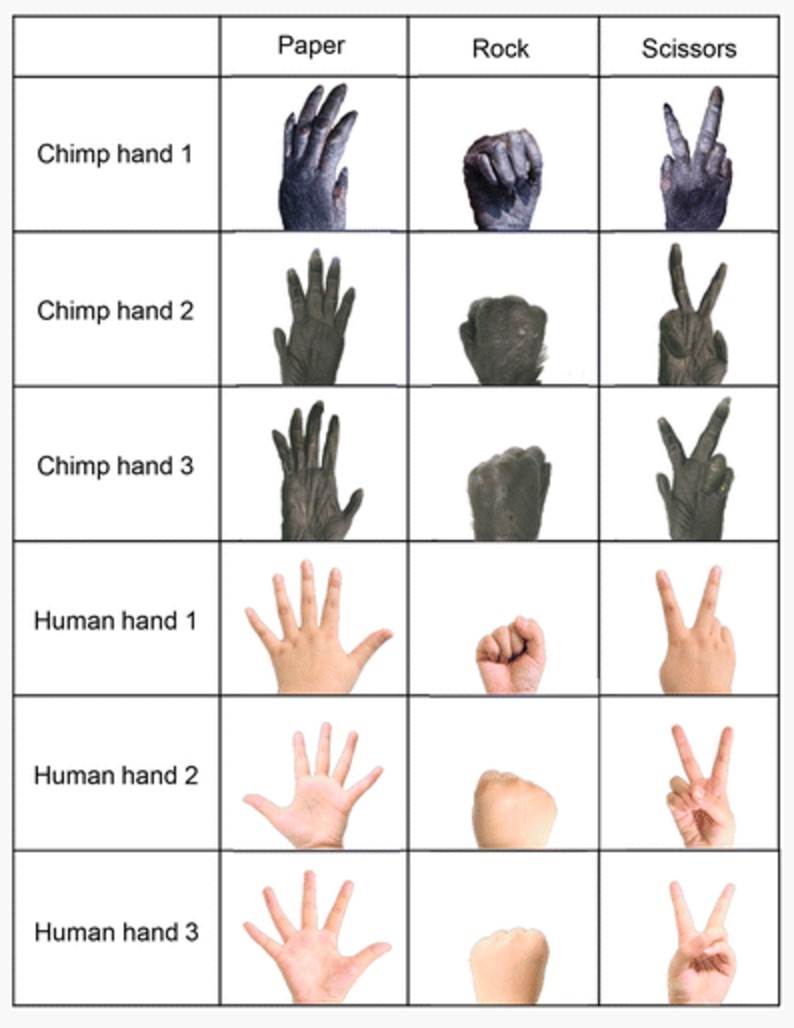T3 Science Hit: micro monster trucks, printable robots and rock, paper, scissors
Scientists race nano cars, MIT 3D print custom robots and chimpanzees learn to play children's games


T3's Laura Mears reports in on the most interesting science stories of the week. For this edition of T3 Science Hit we find out how scientists can now race nano cars, MIT 3D print custom robots, and chimpanzees can learn to play children's games.
Microscopic monster trucks
Monster truck racing just went miniature as molecular vehicles whizzed along a gold nano-track. Six 'cars' entered the race in France in April, and the results were presented this week at the ACS conference in Washington.
One of the contestants, the Bobcat Nanowagon, joined the race remotely from Ohio.
The 3.5 nanometre car was constructed from an H-shaped chassis with a driveshaft in the middle and axels at the front and back. The nano-scale undercarriage had six positive charges incorporated into its structure.
To assemble the vehicle, thousands of copies of the chassis were immersed in water and ring-shaped cucurbituril molecules were added. The mixture was then freeze dried and the scientists crossed their fingers and hoped that the molecules would come together to form miniature cars. Most finished the process with two wheels, but some ended up with four.
With no space for an engine in a car this small, the mini truck was driven using a scanning tunneling microscope. These have atom-thick electrical probe tips designed to be held an atom's width away from the sample. When switched on, electrons tunnel between the tip and the surface.
The equipment is normally used to create atom-accurate surface scans, but for the race, the tip was primed to deliver a positive charge to the car. The charge repelled the chassis and the miniature monster truck covered a magnificent 43 nanometres of track before it hit a bump and stopped.
Get all the latest news, reviews, deals and buying guides on gorgeous tech, home and active products from the T3 experts
Custom origami robots

Roboticists at MIT want to make it easier for us all to make our own robots, so they’ve come up with Interactive Robogami, a new system for designing and printing custom robots in as little as four hours.
Developed by the Computer Science and Artificial Intelligence Laboratory (CSAIL), the tech works a bit like the video game Spore, giving users a bank of 50 different body parts that they can slot together to create their own unique robot creature. Like this one, affectionately known as 'ant'.

The kit include bodies, wheels and legs, and users can also choose a gait, determining the way the finished bot will get up and go. Behind the scenes, the algorithm makes sure that everything fits together in a way that can actually move.
The finished object is 3D printed as a 2D sheet ready to be folded, origami-style, into the bot that the designer imagined on the screen.
So far, they’ve tested their new tech on eight willing guinea pigs, giving them a short training session before challenging them to make a car. The vehicles took just a few minutes to mock up, a couple of hours to print, and around an hour to fold.
“You can quickly design a robot that you can print out, and that will help you do these tasks very quickly, easily, and cheaply... It’s lowering the barrier to have everyone design and create their own robots.”
Cynthia Sung, MIT
Rock, paper, scissors, ape

Every school child knows that rock beats scissors, scissors beats paper, and paper beats rock, but now chimpanzees can play too. Researchers in China and Japan have been teaching our closest living relatives the playground classic, and they're picking it up surprisingly fast.
Seven chimpanzees were enrolled in the training programme, and it was up to a computer to teach them the rules. They were shown images of a chimp hand performing one of the actions and, if they chose the winning one, they were given a tasty treat (a piece of apple). If they got it wrong, a buzzer sounded.
38 children aged between three and six were also tested for comparison. Their rewards were pictures of chimpanzees playing and a sticker to take home, and they also got the negative buzzing noise when they got the match wrong.

The chimps and children were taught the game in a series of pairs, learning rock versus paper first, then scissors versus rock, and finally paper versus scissors.
On average, the chimps learnt the first pair by the end of the second session, took just over three sessions to grasp the second, and then spent over 14 sessions learning the third. They struggled with the circular logic of the final pair, and two of the chimps, Cleo and Pan, couldn't seem to get the hang of it at all.
The children picked up the game much faster, needing around five sessions to learn each of the rules. But, the younger they were, the closer the chimpanzees came to competing with them, putting the apes' gaming ability at around the same level as a four year old.
